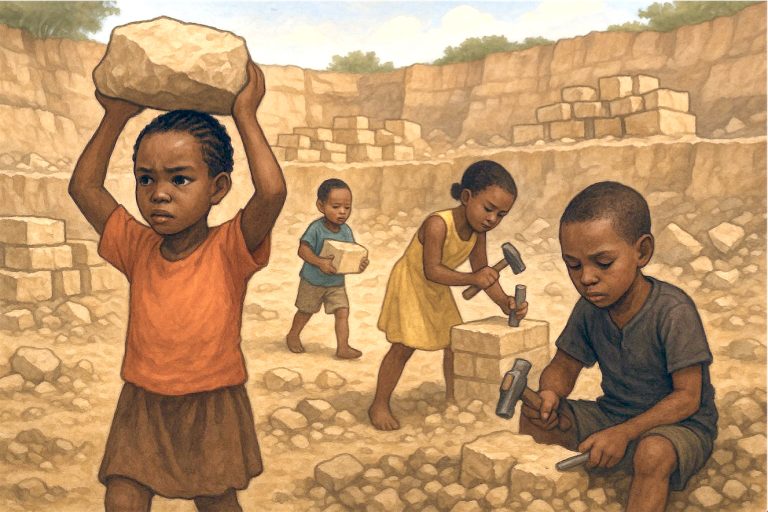The report warns that global progress remains too slow to meet the 2025 elimination target.
Despite decades of global efforts, 54 million were in hazardous work likely to harm their health, safety or development.
The joint report, Child Labour: Global Estimates 2024, Trends and the Road Forward, indicates a reduction of over 20 million cases since 2020.
“The world has made important gains, but far too many children still toil in mines, factories, or fields often doing dangerous work just to survive,” Unicef executive director Catherine Russell said.
“We know how to turn this around with stronger legal protections, investment in free quality education and decent work for adults. But global funding cuts threaten to undo hard-won progress.”
According to the report, agriculture remains the largest contributor to child labour, accounting for 61 per cent of all cases. This is followed by services like domestic work and informal vending at 27 per cent and industry (including mining and manufacturing) at 13 per cent.
ILO director general Gilbert Houngbo said the findings demonstrate both urgency and opportunity.
“Children belong in school, not at work. But to make that possible, parents must be supported with access to decent jobs. We must not lose sight of the fact that there’s still a long way to go,” he said.
The burden is heaviest in Sub-Saharan Africa, which accounts for nearly two-thirds of all children in child labour—about 87 million.
Although the regional prevalence fell from 24 per cent to 22 per cent, the absolute numbers remain unchanged due to population growth and compounding crises such as conflict, poverty and weak social safety nets.
In Kenya, a 2024 report by the Kenya National Bureau of Statistics, supported by Unicef and Kenya Institute for Public Policy Research and Analysis, found that 8.5 per cent of children aged five–17—roughly 1.3 million children—were engaged in child labour.
Rates were highest in arid and semi-arid lands reaching up to 30 per cent in some pastoralist communities.
The UN report further noted that Asia and the Pacific achieved the most notable reduction in prevalence, from six per cent to three per cent (dropping from 49 million to 28 million children).
In Latin America and the Caribbean, the prevalence remained steady, but the absolute number fell from 8 million to 7 million.
Unicef and the ILO are now calling for renewed and increased investment, both globally and domestically to sustain and accelerate progress.
They caution that cuts to education, social protection and livelihoods support may force vulnerable families to send their children to work.
“Shrinking investments in data collection also make it harder to see and respond to child labour,” the agencies warned.
The report showed that child labour deprives children of education and opportunities, putting them at risk of long-term harm and perpetuating intergenerational cycles of poverty.
It adds that boys are more likely to engage in child labour overall, but when unpaid domestic work (21+ hours weekly) is considered, girls carry a heavier burden.
Since 2,000, the number of children in child labour has fallen from 246 million to 138 million.
But to end it within the next five years, the current rate of progress must be 11 times faster, the report estimated.
To accelerate change, the UN agencies urged governments to expand universal social protection, including child benefits, strengthening child protection systems, especially for those at risk of the worst forms of labour and ensuring universal access to quality education, particularly in rural and crisis-affected areas.
In addition to promoting decent work for adults and youth and enforcing laws and accountability across global supply chains to prevent child exploitation.
“We must recommit to ensuring children are in classrooms and playgrounds, not at work,” Russell said.
by AGATHA NGOTHO


